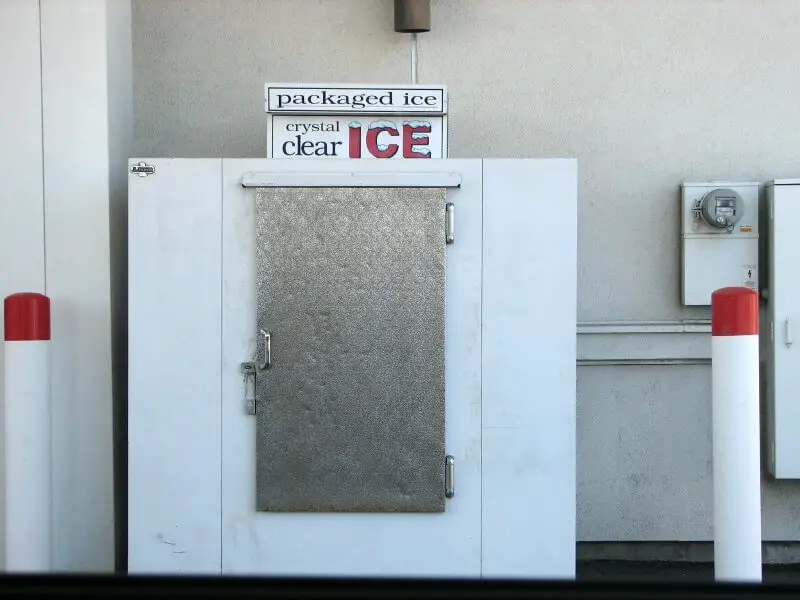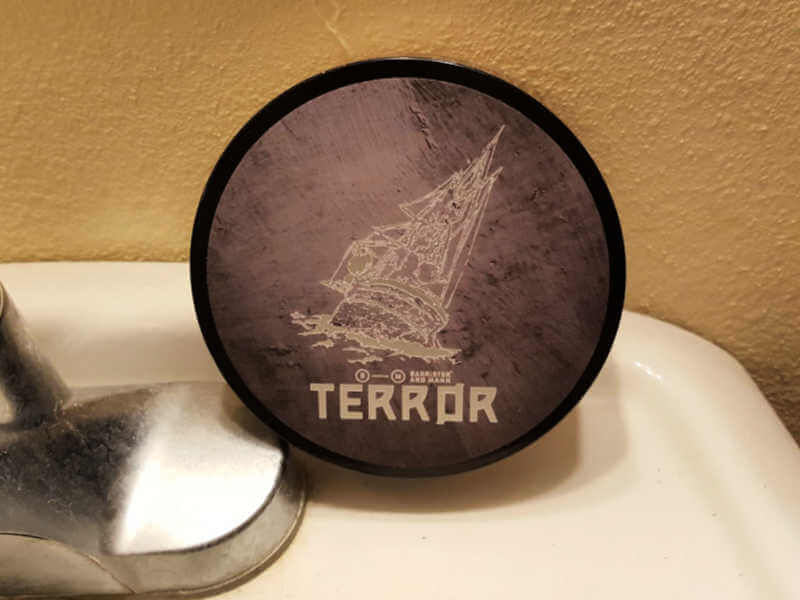
Shaving soap chemistry can be really confusing (see this Sharpologist article to help clear it up), especially materials like synthetic cooling agents, or “synthetic menthol” as they have come to be known. Very much in vogue at present, it strikes me that there’s a need for an explanation of what these substances are, where they came from, and whether they’re safe to put on your face or in your body.
What Is This Stuff?
First things first: the various synthetic cooling agents are not menthol. They’re not even really related to menthol. True menthol is a volatile crystalline alcohol, meaning that it crystallizes at room temperature but melts at temps slightly above that (just about 100 ºF). Naturally-derived menthol, which makes up the majority of the world’s supply, is made by freezing peppermint oil (or some other mint, such as corn mint, spearmint, or pennyroyal) and separating out the crystals that precipitate out of the mix. Synthetic menthol, which is a lesser but increasing percentage of the world’s commercial menthol supply, is manufactured by a variety of processes, and is done so chiefly by the Japanese chemical giant Taskago International. There are several different chemical versions of menthol, mostly designated according to their arranged organic chemistry, but, for our purposes, they all have roughly the same effects.
So what are those effects? Menthol is what’s known as a “counter-irritant”, meaning that it distracts your brain from minor pains and discomforts by irritating the area around or above them, and also functions as a mild anesthetic. That’s why soaps like Cryogen, the Stirling Glacial line, and my own Arctique products (now out of production) all make your face feel numb when you use them, and why it becomes a little easier to cut yourself when you do. You literally can’t feel your face well enough to shave like you normally would.
The other important thing about menthol is the burn. When you use a mentholated product, it stimulates cold-sensitive neural receptors in your skin, which is what makes it feel cold. But it also begins to evaporate due to its low melting point, which is why your eyes water and your nose runs when you use a hyper-mentholated soap or aftershave. The fumes are coming off your skin and irritating your eyes and sinuses, causing them to react accordingly. Some people like that effect. Many, myself included, do not.
Which leads us back to the new generation of synthetic cooling agents. Unlike their more common and more aggressive cousin, the various non-menthol compounds in use in the shaving world today are not volatile alcohols and thus do not vaporize upon contact with skin, so they don’t end up as irritating fumes in your eyes and sinuses. Instead, they cause that same cooling sensation without the counter-irritant or anesthetic properties by activating the cold receptors in your skin.
I see a lot of names like “WS-23” and “Koolada” being thrown around. What’s that about?
The first eight or so of these materials were developed by Wilkinson Sword in the 1970s, the logic being that the eye and sinus irritation could be sidestepped through the use of advanced chemistry without sacrificing the pleasant cooling feeling that many people enjoy. Of the nearly 1200 materials originally synthesized and evaluated, the following were successfully commercialized (the “WS” prefix refers to Wilkinson Sword):
- WS-5 (Until recently, the coldest commercial cooling agent manufactured, and still the coldest one generally available)
- WS-3 (Just below WS-5 in terms of coldness)
- WS-12 (roughly one step above menthol on coldness)
- WS-23 (the most commonly used compound, usually sold under the name “Koolada” and just below menthol in terms of coldness)
- WS-4 (several steps below menthol, though not as weak as some others on this list, and just above WS-27)
- WS-27 (several steps below menthol for coldness)
- 2-L-Menthoxyethanol (different from regular 2-Menthoxyethanol in that it doesn’t smell like ether and is not corrosive to the bone marrow and testicles; stronger than the next one, but not by much, and not really very cold overall)
- N-Cyclopropyl-5-methyl-2-isopropylcyclohexanecarboxamide (the only one without a pronounceable name; well below menthol for coldness)

Despite the initial aim of the project to use these materials in cosmetic and grooming applications, their first industrial usage actually came in the form of cigarette flavorings. In 1981, Philip Morris introduced the “Northwind” cigarette brand into a test market, advertised as “Cool without menthol.” Apparently, the concept proved to be a failure, and it wasn’t until the mid-1990s, with the rise of “Icebreakers” and other super-cold gum brands, that the materials found major use as commercial flavoring agents. Because WS-3 had the best cold-to-cost ratio, it quickly became the industry favorite, but various flavor and fragrance firms like Givaudan, Symrise, International Flavors and Fragrances (IFF), and Taskago began actively developing new materials based on Wilkinson Sword’s pioneering work.
So How Did It Get Into Wet Shaving?
Someone had a really, really good idea. The Holy Black, who (so far as I know) were the first ones to incorporate synthetic cooling agents like these into wet shaving products, debuted the concept with their “Lavender Creeper” line (no longer available) several years ago. Previously, Nivea and several other brands had used materials like menthyl lactate and menthoxypropanediol (sold under the name “Coolact 10” by Taskago and about 25% the strength of menthol) to impart mild cooling sensations to aftershave balms other post shave products, but The Holy Black took the WS-23/Koolada material, which had already found use as a flavoring agent in the vape fluid industry, and applied it to shaving soap in a way we had never seen before. Those of us who enjoy the cooling sensation imparted by these materials and are quite happy to leave the burn and tears of menthol on the cutting room floor owe them a debt, and their work on the subject has already led to an explosion in the popularity of such products from Barrister and Mann and other soap houses.
What Else Is Out There?

While I listed several of the more successful Wilkinson Sword materials above, there are several cooling agents developed by other firms that have found significant commercial use and which may eventually make it into the wet shaving world. In fact, you’ve probably already encountered many of these in one form or another, likely in chewing gums, breath mints, or toothpaste. The aforementioned menthyl lactate and menthoxypropanediol were both developed by the German firm Haarman & Reimer (now part of the chemical conglomerate Symrise), and Givaudan, perhaps the most prestigious fragrance firm in the world, has developed several extremely potent materials. Their Evercool 180® product, which I unsuccessfully attempted to source for use in Terror, is reputed to be ten times stronger than pure menthol, but is apparently so expensive to manufacture that it simply not available on a small scale. The firm has also developed unreleased (but still patented) materials measured at nearly 200 times stronger than menthol, and it’s believed that it may be possible to produce substances that feel colder still. Other cooling products like Symrise’s Frescolat MGA and Procter & Gamble’s Ultracool 7 find widespread use as flavorings for mints, mouthwashes, and toothpaste, and it’s likely that the industry will move further away from menthol in the future.
Editor’s Note: here are a few shave products currently available that use synthetic cooling agents:
| Source | Product | Cooling Agent |
| Barrister And Mann | Terror Shave Soap | Proprietary blend |
| Barrister And Mann | Terror Aftershave Splash | Proprietary blend |
| Phoenix Artisan Accoutrements | John Frum Mysterium Serum Aftershave | Frescolat |
| Phoenix Artisan Accoutrements | CHEL pre/post | Frescolat |
| Wholly Kaw | Fern Concerto Shave Soap | menthyl lactate |
| Wholly Kaw | Fern Concerto Aftershave | menthyl lactate |
| Summer Break Soaps | Cannonball! Shave Soap | WS-23 |
| Noble Otter | Orbit Shave Soap | Koolada-23 |
| Noble Otter | Orbit Aftershave | Koolada-23 |
Are These Things Safe?
When we first debuted Terror at Maggard Razors in June, several people asked me if the materials are safe. Every single one of the substances that I have discussed above has a GRAS/“Generally Recognized As Safe” designation from the FDA and is considered to be safe for topical use as well as ingestion. However, this doesn’t necessarily mean that they’re completely harmless, and you should in no way be pouring this stuff into your eyes (though it does find some use in eyedrops) or otherwise splashing it onto your sensitive areas. If you really feel the need to get some coolness on the more delicate bits of your body, there are several cooling body powders out there that will do the job nicely.
About The Author:
Will Carius is the founder and chief formulator of Barrister and Mann LLC. Their Terror soap and aftershave set, which incorporates several of the materials discussed in this article, is available now, but be careful with it; the cooling effect will stick around for several hours.
Special thanks to Dr. John Leffingwell, whose papers on the subject of cooling agents and other topical actives have been a boon to us all.

I’m a fan of hyper mentholated after-shave products. The main benefit for me is waking me up after a 5 AM shower and shave. It does the job.
I found this particularly interesting as several of my e-liquids have WS-23 as an active ingredient (kicked a 30 year habit via vaping)… also, that none of the cooling creams or croaps I have tried so far have had much effect on my skin including Proraso, but I haven’t tried any of the products listed here thus far.
Thanks for writing this article, Will! I haven’t tried any of the shave products formulated with synthetic cooling agents yet, but I’ve definitely been curious about what these agents were. I was also wondering about how safe these are to use.
Good article. I was in fact wondering about artificial menthol due to a solicitation from PAA. Thank you .
Seems like a solution in search of a problem.
Comments are closed.